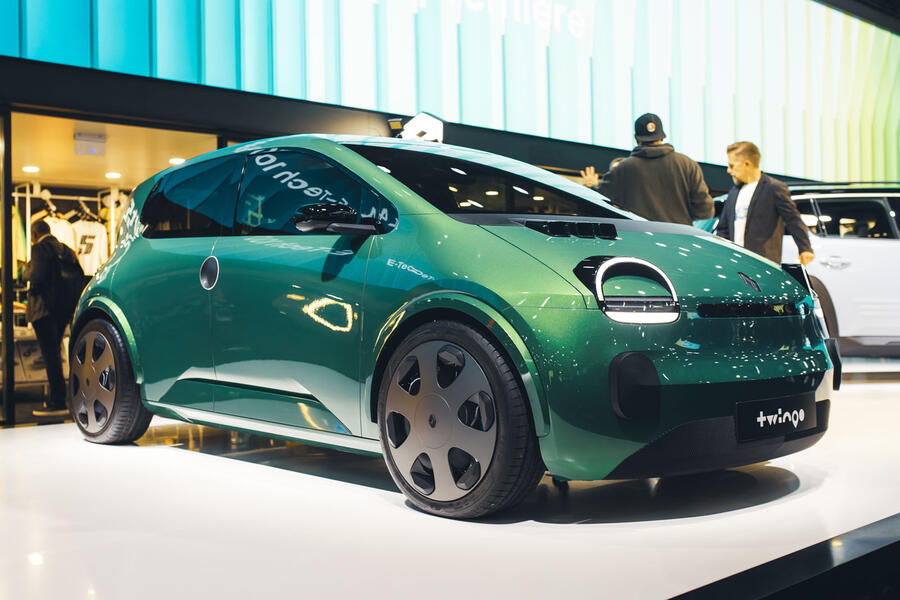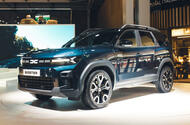Budget brand's line-up to grow drastically with new models based on CMF-B and Ampr platforms
Dacia is considering entering a wide range of new segments as it fleshes out its line-up over the coming years – with possibilities including a new electric city car, an estate and a Renault Twizy-esque urban EV.
The firm is at the Paris motor show to reveal the new Bigster crossover, its largest model yet and the first of three new C-segment models due to be added to the range in the next two years.Â
Speaking to journalists at the show, CEO Denis Le Vot remained tight-lipped on what form the next two mid-sized cars will take but did clarify that they will be "different bodies, different names, different everything" compared with the existing line-up.Â
Both cars will be based on the Renault Group's CMF-B modular architecture – which can stretch up to 4.6 metres long – and are highly likely to be offered with hybrid power initially, and EV options later down the line.Â
But as for clues to their shape and positioning, Le Vot would only say: "You can imagine, you can guess. We'll talk soon."
He jokingly suggested that they will be "an LCV and a convertible", but stopped short of giving any details.Â
However, asked if one could be an estate, he replied: "Excellent idea - fantastic! Why not?", suggesting there is a possibility that Dacia will look to take on the likes of the Peugeot e-308 SW and MG 5 with its own affordable wagon.Â
Adding fuel to the fire, design director David Durand told Autocar "you can expect something different" from the next car, the design for which has already been signed off. It will, he confirmed, occupy the same C-segment as the Bigster.
“The next one is finished. We tuned the last little details a few weeks ago and now it goes into the manufacturing process," he said.
“So, yes this one is ready, but we are still working on many other projects. We are trying to have a coherent range with the good product in the good position - not having too many cars in a few centimetres [of one another]."
Either way, the firm will give more details in the near future because it now operates on a tight 100-week development cycle for new models – and the new cars are due by the end of next year.Â
Â
Â
But while Dacia is expanding its line-up upwards to better compete in Europe's crucial C-segment, it has also not written off the possibility of extending downwards, too, with Le Vot alluding to the potential viability of a tiny city car based on sibling brand Renault's new Twingo.

Le Vot said Dacia's C-segment push does "not mean that we're not looking at a smaller thing", and suggested that the firm has in the past not offered anything below the Sandero because "the equation of a classic A-segment [car] doesn't really fly with ICE solutions", given their thin profit margins. Â
The firm does already sell an electric microcar in Europe, the Spring, and Le Vot said that car is "here to stay" for the foreseeable future.Â
But the £15k Spring is built in China, which significantly dents its profitability in Europe, and moving production here would be a "complicated thing to do" because of the huge work needed to rebuild the supply chain and logistics network.
Engineering and producing a Spring successor in Europe would enhance its profitability and better incorporate the demands of European buyers from the early stages, and Le Vot is confident that affordability can be factored in right from the conception stage.
For example, the low range requirements of a small commuter car mean that it could theoretically be fitted with a battery half the size of today's EV city cars. The average commuter drives 37km (23 miles)Â per day, said Le Vot, which means "you can have half the battery input, and it will still work".
One possibility, acknowledged Le Vot, is using the Ampr Small platform that underpins the Renault Twingo as the basis for a Dacia alternative.Â
He refers to Renault's modular architectures as the 'techno bricks' on which Dacia can base all its models – a crucial component of Dacia's value-focused business model – and did not write off the possibility of using any of them for upcoming cars.Â
Le Vot even went so far as to say that Dacia is evaluating the possibility of creating its own version of the tiny two-seat Duo from Renault's new mobility brand Mobilize.
"We are all together,"Â he said. "There is nothing that we don't share."
Autocar has previously reported that Dacia has considered the viability of a microcar to rival the Citroën Ami, and the Duo could provide a quick and cost-effective means of bringing that to reality.


